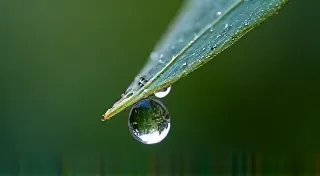Guardians of the Patch: Natural Pest Control for Watermelon Harmony
There's a certain poetry to growing heirloom watermelons. More than just sustenance, it's a connection to the past, a taste of history resurrected on your own patch of earth. I remember my grandfather, a man of few words but immense patience, tending to his prized 'Black Diamond' watermelon. It wasn’t just a fruit to him; it was a legacy, a testament to the resilience of a particular seed passed down through generations. It’s a feeling I try to emulate now, and a huge part of that involves protecting the fruits of our labor—naturally.
Just as an antique accordion, its bellows worn but its music still vibrant, requires careful maintenance to continue its song, so too does a watermelon crop need diligent care to thrive. These aren't the uniform, often bland, watermelons you find in supermarkets. Heirloom varieties like 'Arkansas Black', 'Georgia Jet', and 'Charleston Gray' possess unique flavors and textures, shaped by generations of adaptation and selective breeding. They carry within them a history as rich and layered as the intricate workings of a beautifully crafted accordion.

Understanding the Delicate Balance
Protecting your heirloom watermelons isn’t about eradication. It's about fostering a harmonious ecosystem where pests are managed, not annihilated. Chemical interventions disrupt this balance, often harming beneficial insects and soil microbes that are vital for overall plant health. The principles are surprisingly similar to restoring an antique accordion. You wouldn't blast it with harsh solvents; you’d meticulously clean and repair, preserving its original structure and character. Similarly, natural pest control emphasizes prevention, observation, and gentle intervention.
Common Watermelon Pests and Their Natural Foes
Several pests commonly target watermelons. Aphids, for instance, suck sap, weakening the plant and spreading disease. Cucumber beetles can decimate seedlings and damage leaves. Squash bugs and vine borers pose a significant threat, boring into the vines and disrupting water transport. The key is to identify these issues early and deploy appropriate organic solutions.
Aphids: Attract ladybugs, lacewings, and parasitic wasps – natural predators that devour aphids. Regularly spray plants with a strong stream of water to dislodge them. Neem oil, a natural insecticide derived from the neem tree, is also highly effective. Its effectiveness is analogous to a skilled accordion repairer using precise tools and techniques – targeted and efficient.
Cucumber Beetles: Row covers are your first line of defense, creating a physical barrier that prevents beetles from reaching your plants. Companion planting with herbs like basil and dill can also deter them. Attracting beneficial nematodes to the soil can also help control beetle larvae.
Squash Bugs & Vine Borers: Hand-picking squash bug eggs and larvae is surprisingly effective. Covering young vines with protective sleeves can prevent vine borer infestations. Attracting birds to your garden can also help control bug populations.
Prevention is Paramount: The Foundation of Harmony
Just as a well-maintained accordion benefits from regular cleaning and lubrication, a healthy watermelon crop needs a strong foundation. This begins with soil health. Amend your soil with plenty of compost and aged manure to provide essential nutrients and improve drainage. Healthy plants are naturally more resistant to pests and diseases. Crop rotation is also vital—avoid planting watermelons in the same spot year after year to prevent soilborne diseases from building up. This rotation mirrors the careful consideration a collector gives to storing antique instruments, ensuring their longevity.

Observation: The Gardener’s Keen Eye
Regularly inspect your watermelon plants for signs of pests or diseases. Look for chewed leaves, wilting foliage, or unusual spots. Early detection is crucial for effective intervention. This requires a level of attentiveness akin to a musician carefully listening to the nuances of their instrument, discerning subtle changes that indicate a need for adjustment.
Remember, a little damage isn’t always a cause for alarm. A few chewed leaves or a few aphids can be tolerated. The goal is to maintain a healthy balance, not to eliminate every trace of imperfection. Watermelon plants, like antique accordions, carry a patina of age and experience – a record of their journey through time.
Natural Remedies and Organic Solutions
When intervention is necessary, several organic solutions are available. Insecticidal soap effectively controls aphids and other soft-bodied insects. Bacillus thuringiensis (Bt), a naturally occurring bacterium, is effective against caterpillars. Diatomaceous earth, a fine powder made from fossilized algae, can be sprinkled around plants to deter crawling insects. Always use these remedies judiciously, following label instructions carefully.
Homemade remedies can also be effective. A simple spray of water mixed with a few drops of dish soap can control aphids. Garlic and pepper sprays can deter various pests. These concoctions are akin to a restorer’s homemade cleaning solutions, carefully formulated to preserve the instrument’s integrity.
The Reward: A Taste of History
Growing heirloom watermelons is more than just a gardening project; it's an act of preservation. You’re safeguarding a piece of agricultural history, ensuring that these unique varieties continue to thrive. The taste of a freshly harvested ‘Black Diamond’ watermelon, bursting with sweetness and complexity, is a testament to the power of patience, dedication, and a deep appreciation for the natural world. It’s a moment of connection – to the land, to the past, and to the enduring legacy of heirloom varieties.

Just as an antique accordion, carefully restored and lovingly played, continues to fill a room with music, so too does a thriving watermelon crop enriches our lives with flavor, beauty, and a profound sense of connection to the past. It's a harmony worth protecting.





